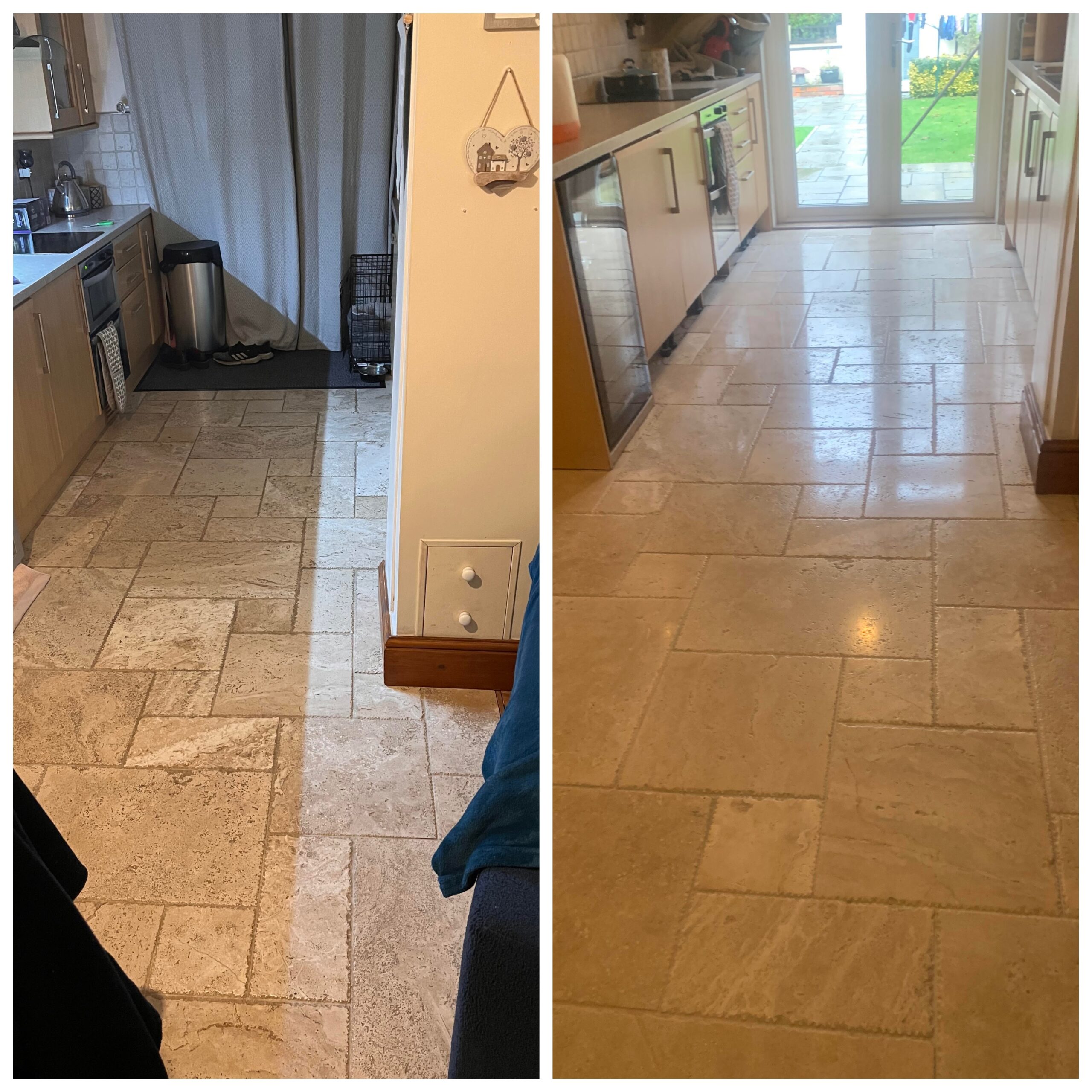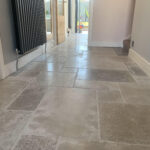
Stone floors are an increasingly popular choice for homeowners.
Gone are the days of covering up classic stone floors with carpets and modern alternatives; now, everyone is ripping up their laminates and carpets to restore older stone tiles.
Whether it be travertine, terrazzo, limestone, marble, Victorian or slate – they are all timeless and durable choices of flooring.
Despite their inherent durabilty, proper maintenance is essential to preserve the natural beauty of stone flooring and extend its lifespan. In this guide, we’ll delve into the tips and tricks to help you maintain your stone tiles.
Understanding your stone floor
It is crucial to understand the type of stone flooring in your home. Different stone floors have unique characteristics and maintenance requirements. Marble, for instance, is prone to etching from acidic substances and spillages, while travertine is known to develop cracks and holes over time.
If you’re unsure of the type of stone that is in your home, please don’t hesitate to get in touch for a free floor assessment and stone identification.
Establish a regular cleaning schedule
Establishing a regular cleaning routine is the foundation of effective stone floor maintenance.
Sweep or vacuum regularly: Dust and dirt are abrasive particles, that will gradually wear down the surface of stone. Use a soft brush and dustpan or a vacuum to remove loose debris regularly (at least weekly).
Damp mopping: Use an appropriate stone cleaner diluted in warm water and mop after you have vacuumed the flooring. Avoid acidic or abrasive shop-bought cleaners as they can etch and damage many stone floors.
Stain removal tips
Stain removal tips
Some floors can be resistant to many spillages. Others, such as marble, can be etched by certain drinks and chemicals. Address any spillages promptly to prevent damage:
Blot, don’t scrub: When a liquid is spilled, blot it immediately with a clean, soft cloth. Avoid wiping, as this can spread the stain.
Use a poultice: For stubborn stains that won’t blot or mop out, create a poultice using a mixture of baking soda and water.
Apply the paste mixture of baking soda and water to the stain and cover it with clingfilm, allowing it to dwell overnight and draw out the staining. If this method is not successful, call your local stone restoration expert.
Avoid these stone cleaning mistakes
Harsh chemicals: Acidic or abrasive cleaning chemicals can damage sealants and the stone itself. Stick to the appropriate cleaning products for your type of stone (ask your local professional for advice).
Incorrect cleaning tools: Avoid using abrasive tools and products like wire wool or coarse brushes, as they can scratch the stone’s surface and even damage many topical sealants.
Scheduling an appointment
Even when you have been meticulous in maintaining your floor, there comes a time when only a professional clean can remove ingrained soiling and bring your stone back to its best.
To book a free quotation, simply click on your area below:
- Hard floor & tile cleaning in Cardiff
- Hard floor & tile cleaning in Swansea
- Hard floor & tile cleaning in Newport
- Hard floor & tile cleaning in Bristol
- Hard floor & tile cleaning in Caerphilly
- Hard floor & tile cleaning in Cwmbran
- Hard floor & tile cleaning in Rhondda
- Hard floor & tile cleaning in Vale Of Glamorgan
- Hard floor & tile cleaning in Abergavenny
- Hard floor & tile cleaning in Monmouth



